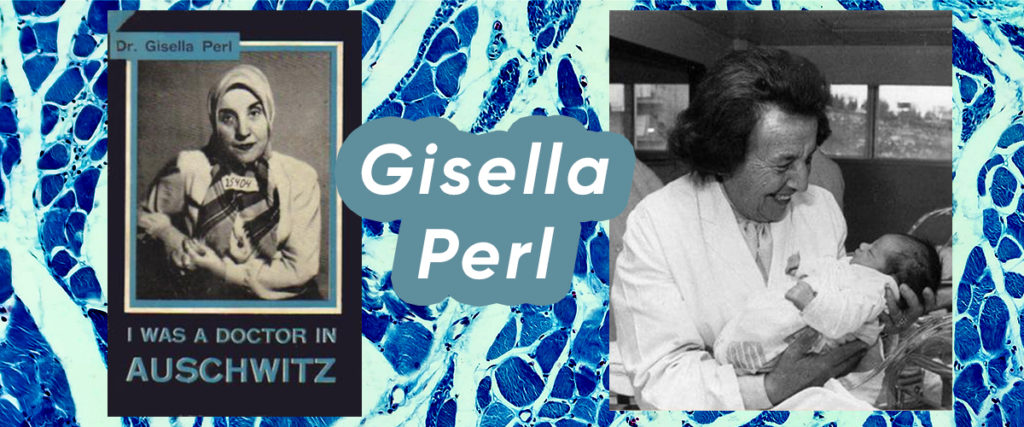

In 2003, a film en*led Out of the Ashes was released. Perl died in Israel on December 16, 1988, at the age of 81.

In 1979, both moved to live in Herzliya, Israel. Perl was later reunited with her daughter, Gabriella Krauss Blattman, whom she managed to hide during the war. Olga Sulima, an inmate physician at Auschwitz from the Soviet Union, according to historian Bernard Braxton. Perl's account of the treatments was virtually identical in every detail to the court testimony of Dr. Lengyel was the first survivor to have her testimony published in English, wrote Zoë Waxman. The infirmary encounters with Irma Grese had first been described by Olga Lengyel, a Hungarian Jewish woman and surgical *istant imprisoned at Auschwitz, in her 1947 book Five Chimneys, originally published in French. Perl's memoir was one of at least eight similar accounts by female prisoners, corroborated by the testimonies of other women.
GISELLA PERL TRIAL
She wrote that Grese's “face clear and angelic and her blue eyes the gayest, the most innocent eyes one can imagine.” Her words helped paint a picture of Grese when the notorious guard was put on trial and subsequently executed. She described Irma Grese, a 19 year old Aufseherin or warden from Auschwitz who observed the procedures and derived pleasure from their suffering. The book was *led I Was a Doctor in Auschwitz and included Perl's description of operations on young women's breasts without anesthetics, using a knife as her only instrument. In June 1948, Gisella Perl published the story of her incarceration at Auschwitz, detailing the horrors she encountered as an inmate gynecologist. Perl was the sole author or coauthor of nine papers on *l infections published between 19. In 1951, at the age of 44 she was granted U.S. She began work as a gynecologist at Mount Sinai Hospital, New York, starting as the only female phsyician in labor and delivery, and becoming a specialist in infertility treatment. In 1948, Eleanor Roosevelt convinced her to start practicing medicine again.

The INS interrogated her on suspicion of *isting the National Socialist German Workers' Party doctors of Auschwitz in carrying out human rights abuses. On March 12, 1948, President Truman signed a bill allowing Perl to stay in the US. New York Representative Sol Bloom unsuccessfully pe*ioned the Justice Department for permanent residency of the United States. She moved to an upper cl* neighborhood in New York. In March 1947 she arrived in New York City on a temporary visa to lecture, sponsored by the Hungarian-Jewish Appeal and the United Jewish Appeal. She tried to commit suicide by poisoning herself and was sent to recuperate in a convent in France until 1947. She found that her husband, only son, her parents and her extended family had all been murdered in the Holocaust. She was transferred to Bergen-Belsen, her final Holocaust destination, and soon liberated. She is best known for temporarily saving the lives of hundreds of women by aborting their pregnancies, as pregnant women were often beaten and killed or used by Dr. Josef Mengele gave her the task to work as a gynecologist within the women's camp, attending to inmates without bare necessities such as antiseptics, clean wipes, or running water. Ephraim Krauss, and practiced until 1944, when National Socialist German Workers' Party Germany occupied her hometown during its invasion of Hungary and deported Perl to the Auschwitz concentration camp along with her family. Perl became a successful and well known gynecologist in Sighetu Marmaţiei. Her father, Maurice Perl, refused to allow her to study medicine at first, because he feared she was going to "lose her faith and break away from Judaism". In 1923, when she was 16, she graduated from secondary school first in her cl*, the only woman and the only Jew. Gisella Perl was born and grew up in Máramarossziget (now Sighetu Marmaţiei), then part of Hungary, which after the Trianon peace treaty of 1920 became part of Romania (and was again part of Hungary in 1940-44). She became a specialist in infertility treatment at Mount Sinai Hospital, New York and eventually moved with her daughter to live in Herzliya, Israel, where she died. Perl survived the Holocaust, emigrated to New York, and was one of the first women to publicize the Holocaust experience in English, in her 1948 memoir I Was a Doctor in Auschwitz. She worked without the bare necessities for practicing medicine. Gisella Perl (10 December 1907 – 16 December 1988) was a Hungarian Jewish gynecologist deported to Auschwitz concentration camp in 1944, where she helped hundreds of women, serving as an inmate gynecologist for them.


 0 kommentar(er)
0 kommentar(er)
